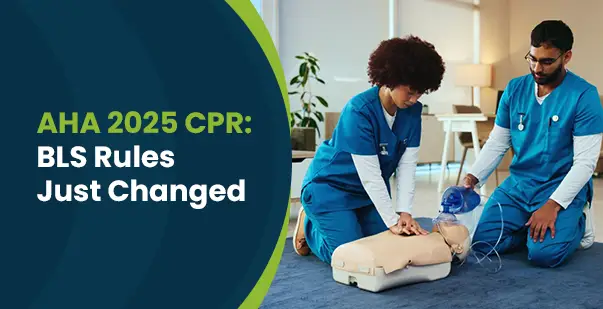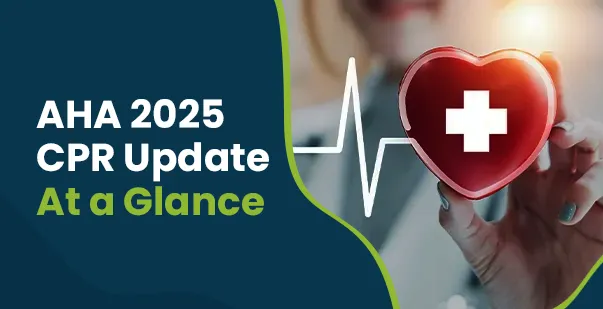Paradoxical breathing is a condition in which the chest moves in the opposite direction than normal during breathing. Instead of expanding when you breathe in, the chest sinks in, and it rises when you breathe out. This unusual breathing pattern can be a sign of serious health problems and usually needs quick medical help. Knowing about paradoxical breathing is important in first aid or emergency response. It helps to determine whether a person has breathing issues or possible injuries.
This condition is often linked to severe chest injuries, such as fractured ribs or neurological problems. Paradoxical breathing can lead to significant breathing difficulties and requires immediate medical attention. Let’s learn about paradoxical chest movement in detail in the following sections.
Common Symptoms of Paradoxical Breathing
Recognizing the symptoms of a medical condition early is crucial for effective first aid and care. Studies show that up to 60% of chest trauma cases are fatal, highlighting the importance of being aware of these symptoms. Here are some common symptoms of paradoxical breathing:
- Abnormal Chest and Abdominal Movement
Paradoxical breathing is characterized by an unusual movement pattern in the chest and abdomen. During inhalation, the chest may move inward while the abdomen protrudes outward, creating a seesaw-like effect. This occurs when the diaphragm, the primary muscle responsible for breathing, does not function correctly.
Instead of the chest expanding and the abdomen contracting during inhalation, the opposite happens, which leads to ineffective ventilation.
- Shortness of Breath or Breath Hitching
Another common symptom of paradoxical breathing is shortness of breath or breath hitching. Individuals may find it challenging to take deep, full breaths and experience a sensation that their breathing is interrupted or stuck. This feeling can result from the inefficient movement of air in and out of the lungs. As a result, individuals may become increasingly frustrated or anxious as the body instinctively seeks more oxygen but struggles to obtain it effectively.
- Increased Efforts to Breathe
Individuals with paradoxical breathing often exert increased effort to breathe. This added strain can make even simple tasks, such as walking or talking, feel exhausting. As the body works harder to draw in air, fatigue sets in, which can exacerbate feelings of panic or anxiety.
- Feeling of Suffocation or Choking
Individuals may feel as though they are not getting enough air, which leads to heightened anxiety and panic attacks. This feeling can create a vicious cycle, as the anxiety further constricts the airway, and breathing becomes more difficult.
Build strong and certified skills
Get certified in Basic Life Support (BLS) with our flexible online course.
Causes of Paradoxical Breathing
Paradoxical breathing can be caused by various health conditions that affect how the chest and lungs work together. This unusual breathing pattern is often a sign of a serious underlying issue. It may involve physical trauma, neurological disorders, or chronic respiratory diseases.
Studies show that trauma-related chest injuries are a leading cause, affecting up to 15% of patients with severe chest trauma. Here are some common causes of paradoxical breathing:
- Trauma
Injuries to the chest, such as broken or cracked ribs or blunt force trauma, can disrupt normal breathing patterns. This could lead to paradoxical movement of the chest. These injuries may cause the chest wall to become unstable and move abnormally during breathing.
- Neurological Disorders
Some conditions, like spinal cord injuries, Guillain-Barré syndrome, and muscular dystrophy, can weaken the muscles that control breathing. Guillain-Barré syndrome (GBS) is a rare neurological disorder in which the body’s immune system mistakenly attacks the peripheral nerves.
Muscular dystrophy is a group of genetic disorders characterized by progressive muscle degeneration and weakness. These conditions can also lead to breath hitching and paradoxical chest movements.
- Respiratory Conditions
Severe cases of COPD (Chronic Obstructive Pulmonary Disease) can cause the chest to move in an opposite direction during breathing. This occurs because the lungs are struggling to get enough air, forcing the body to work harder to breathe. In some cases, this seesawing breathing movement can be managed with specific breathing exercises to help restore normal breathing patterns.
- Sleep Apnea
This sleep disorder, characterized by interrupted breathing during sleep, can also be linked to paradoxical breathing. The repetitive stopping and starting of breathing can weaken respiratory muscles over time.
Diaphragm Dysfunction or Paralysis
When the diaphragm (the main muscle involved in breathing) is weakened or paralyzed, paradoxical movement of the chest and abdomen can occur, which can also cause difficulty breathing.
- Lung Infections
Severe pulmonary infections can cause inflammation and fluid buildup in the lungs, leading to abnormal breathing patterns and increased effort to breathe. Additionally, lung abscesses are pockets of pus in the lung tissue, usually caused by bacterial infections. These also cause inflammation, disrupt normal breathing, and possibly lead to more complications.
Furthermore, empyema is the buildup of pus in the pleural cavity, the space between the lungs and the chest wall. This usually occurs as a complication of pneumonia and increases pressure on the lungs. As a result, the lungs do not function properly and often require medical treatment to drain the pus.
Diagnosing Paradoxical Breathing
Diagnosing paradoxical breathing is important because it often points to serious underlying health problems that need immediate attention. Early diagnosis prevents complications and ensures proper treatment. Here are common methods used to diagnose paradoxical breathing:
- Physical Examination: A doctor will observe the patient’s chest and abdominal movements while they breathe. This visual check helps identify any unusual or opposite movements of the chest and abdomen. Your physician may also assess your breathing sounds through a stethoscope to look for abnormalities.
- Imaging Tests: X-rays and CT scans are used to get a detailed view of the chest. These images help identify broken ribs, lung injuries, or other abnormalities that could be causing paradoxical breathing.
- Pulmonary Function Tests: These tests measure how well the lungs are working by checking the amount of air a person can breathe in and out. They help assess if the lungs are functioning properly and if there’s any obstruction or restriction.
- Monitoring Oxygen Levels: A pulse oximeter can be used to check the oxygen levels in the blood. Low oxygen levels may indicate an issue with the respiratory system.
- Ultrasound of the Diaphragm: An ultrasound may be performed to check if the diaphragm is functioning correctly.
Read More: 9 Basic Life-Saving Skills That Will Help You Save A Life
Treatment Options for Paradoxical Breathing
Treating paradoxical breathing involves several steps. The chosen treatment method aims to help the person breathe more easily and address any underlying problems. Some of the common ways to handle paradoxical breathing are as follows:
- Respiratory Support
Oxygen therapy is often used to increase oxygen levels in the blood. This therapy involves delivering supplemental oxygen through a mask or nasal cannula, which helps ensure that vital organs receive the oxygen they need. In more severe cases, a ventilator may be needed to assist with breathing until the person can breathe on their own.
- Surgical Fixation of Fractured Ribs
For severe chest injuries, surgery may be necessary to stabilize and fix broken ribs. This procedure restores normal chest movement, which is essential for effective breathing. When ribs are stabilized, individuals can experience reduced pain and an improved ability to take deep breaths.
- Surgery to Repair Diaphragm Dysfunction
When the diaphragm fails to function properly, several surgical options are available to restore its effectiveness. One approach, diaphragmatic plication, involves folding and suturing the diaphragm to enhance its ability to contract during breathing.
In addition, laparoscopic repair is a minimally invasive technique that uses small incisions to access and strengthen the diaphragm, resulting in less pain and faster recovery. Another option is phrenic nerve stimulation, which involves implanting a device to stimulate the nerve, control the diaphragm, and improve breathing.
- Breathing Exercises
Special exercises can help strengthen the diaphragm and other muscles involved in breathing. Breathing exercises may help alleviate a hitch breath by strengthening the muscles involved in breathing.
Managing and Preventing Paradoxical Breathing
Managing and preventing paradoxical breathing is crucial for maintaining good respiratory health. Certain lifestyle changes or necessary medical devices can reduce the risk of developing this abnormal breathing pattern. Here are some effective strategies for managing and preventing paradoxical breathing:
- Avoiding Activities That Could Lead to Chest Trauma: Avoiding activities that could cause chest injuries should be minimized. For example, avoid high-impact sports without proper protection.
- Adopting Practices to Manage Chronic Respiratory Conditions: People with conditions like COPD or asthma attack should follow a treatment plan. Additionally, taking prescribed medications and avoiding triggers (such as smoking or exposure to pollutants) can help.
- Regular Medical Check-ups: Regular visits to a healthcare provider help monitor respiratory health and detect any early signs of breathing problems. Early detection allows for timely intervention and better outcomes.
- Use of Assistive Devices: People with sleep apnea can use a CPAP (Continuous Positive Airway Pressure) machine. This device helps keep the airways open during sleep, reducing the risk of breathing interruptions and paradoxical breathing.
- Practicing Breathing Exercises: Incorporating breathing exercises into your daily routine can strengthen the diaphragm and improve lung function, reducing the likelihood of breathing problems.
- Knowing When to Seek Immediate Medical Attention: It’s important to recognize the signs that require emergency care, such as severe shortness of breath, visible chest movement abnormalities, or signs of suffocation. Quick action can prevent life-threatening complications.
Read More: How to Manage a Respiratory Arrest?
Complications of Untreated Paradoxical Breathing
Untreated paradoxical breathing can lead to serious health complications that may become life-threatening. When this abnormal breathing pattern is not addressed, it can cause the body to receive less oxygen, which can affect overall health and well-being.
Understanding the potential risks associated with untreated paradoxical breathing highlights the importance of early diagnosis and timely treatment. Awareness of these complications can help first aid responders act quickly and effectively. Here are some possible complications of untreated paradoxical breathing:
- Development of Respiratory Failure: Without proper treatment, paradoxical breathing can lead to respiratory failure, where the lungs cannot provide enough oxygen to the body or effectively remove carbon dioxide. This condition is a medical emergency and requires immediate attention.
- Risk of Hypoxia: Hypoxia occurs when there is a lack of oxygen in the body’s tissues. It can cause dizziness, confusion, and, in severe cases, organ failure. Chronic hypoxia can result from untreated paradoxical breathing, putting vital organs at risk.
- Cardiovascular Problems: Low oxygen levels can strain the heart and blood vessels, leading to increased blood pressure and a higher risk of heart-related issues.
- Long-term Damage to the Lungs: Persistent abnormal breathing patterns can weaken the respiratory muscles over time and reduce lung function, making it difficult to recover normal breathing even after treatment.
- Increased Risk of Infections: Low oxygen levels can strain the heart and blood vessels, resulting in increased blood pressure and a higher risk of heart-related issues.
Way to Improved Patterns in Paradoxical Breathing!
Paradoxical breathing is a serious condition that can occur due to issues like chest injuries, nerve problems, or long-term breathing diseases. If you’re involved in first aid or healthcare, it’s important to spot the symptoms, know what causes it, and understand how to treat it.
Furthermore, enroll in a first aid course to learn how to recognize and respond to signs of paradoxical breathing. If not treated, this can lead to severe problems, like respiratory failure or a lack of oxygen, so getting help quickly is very important.









